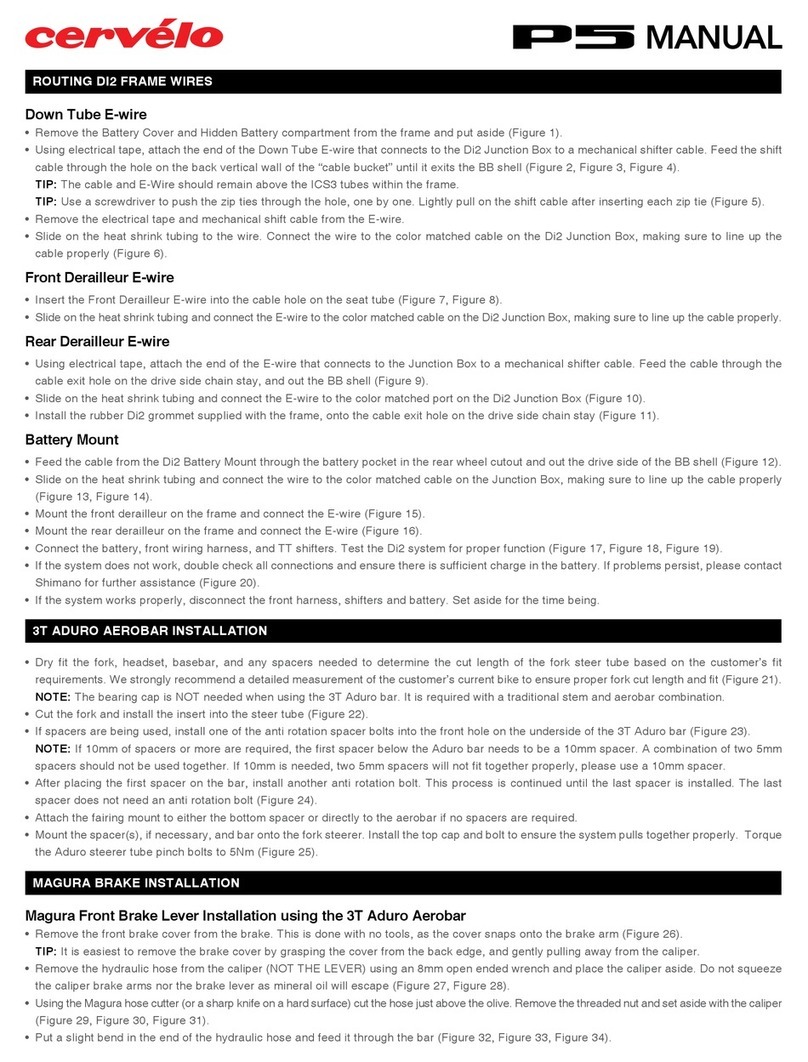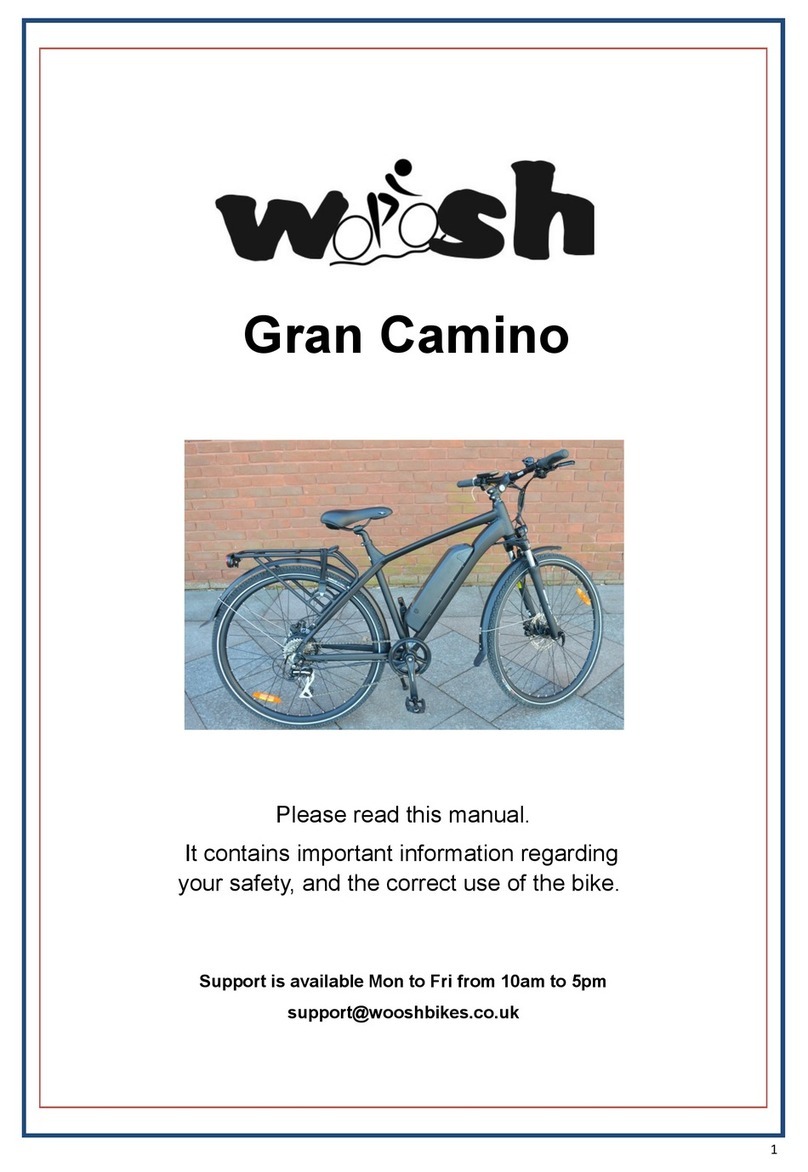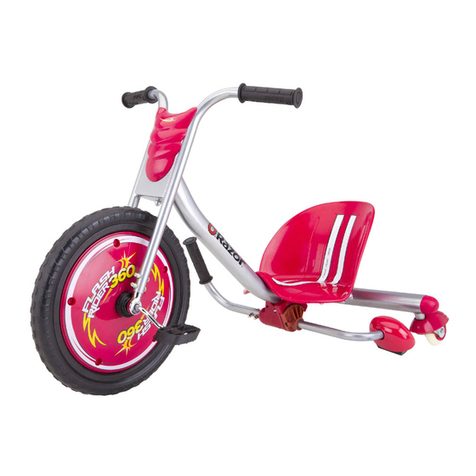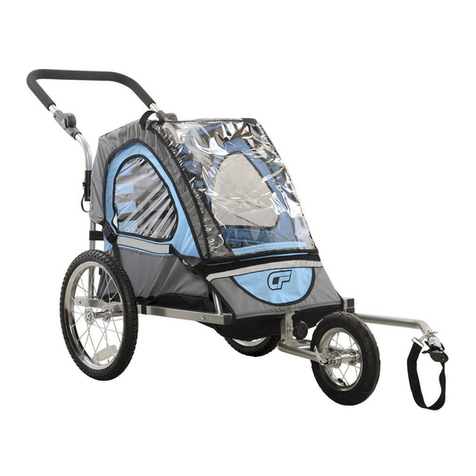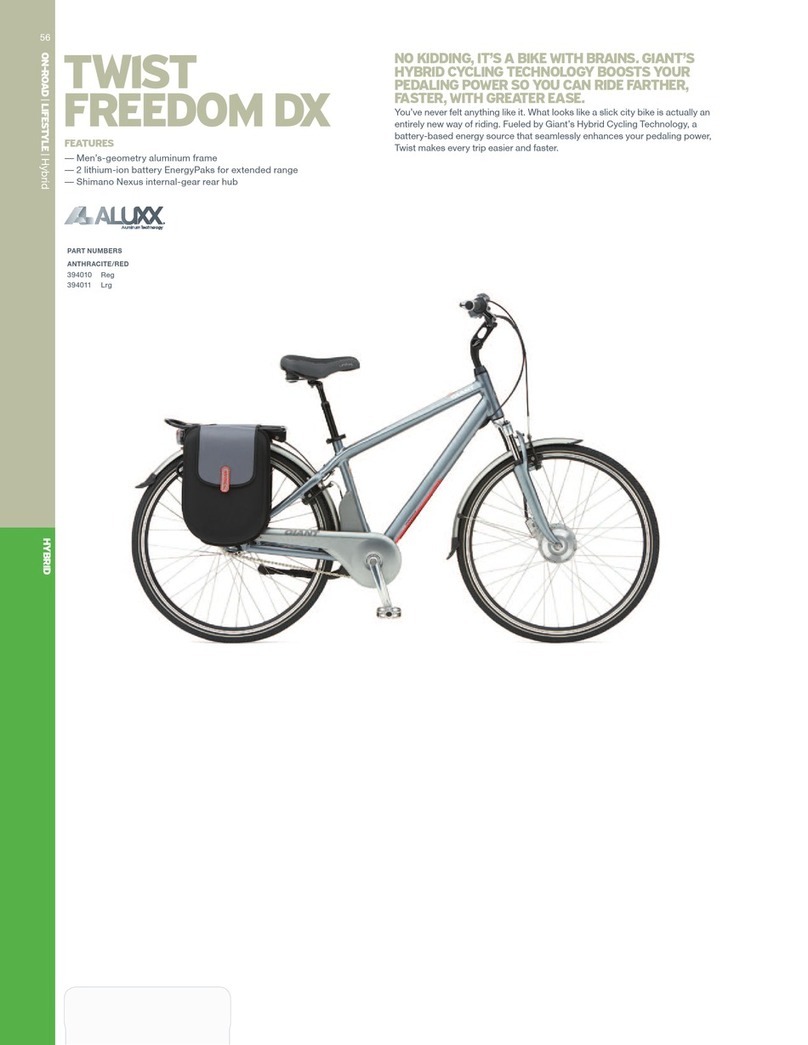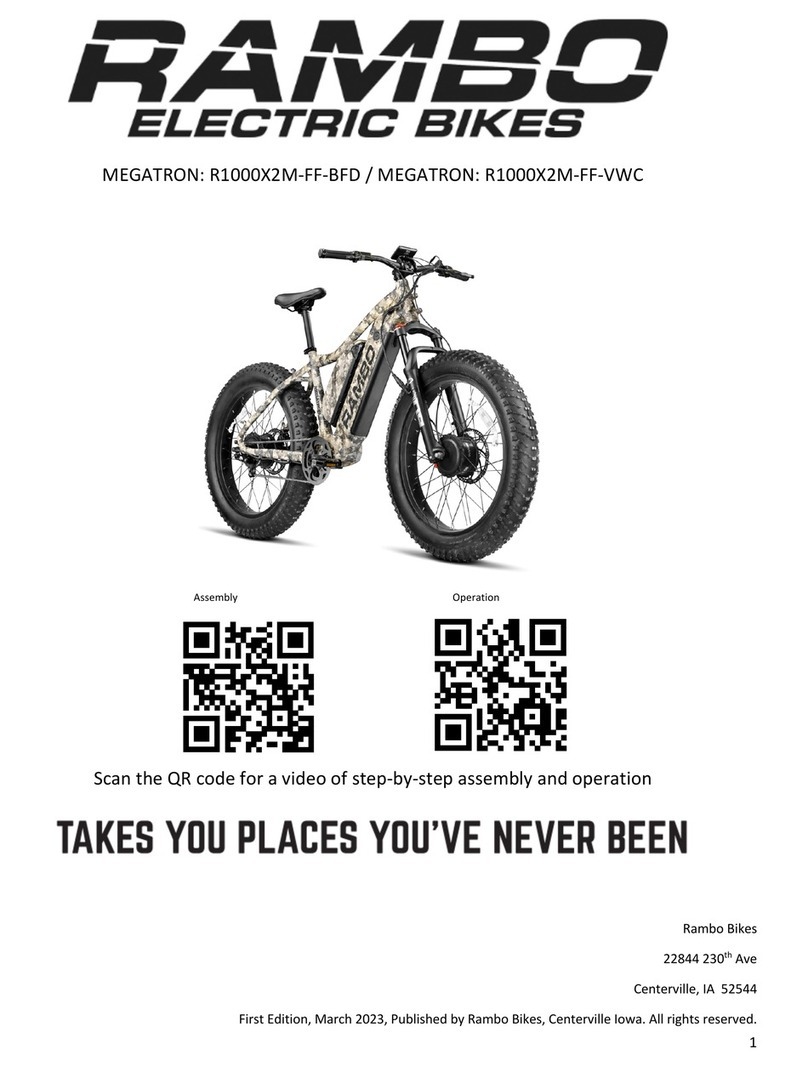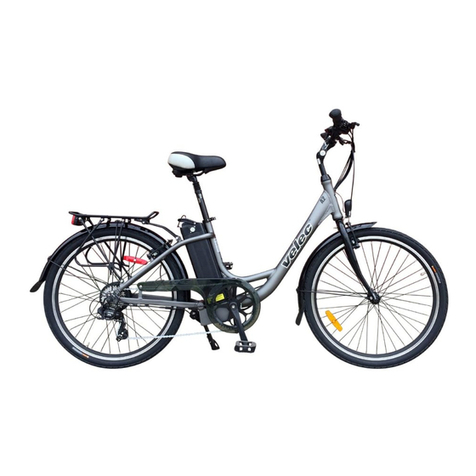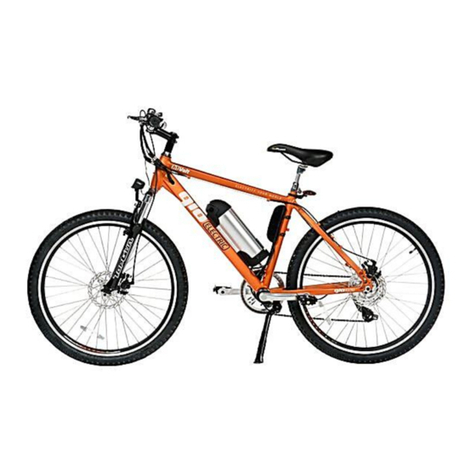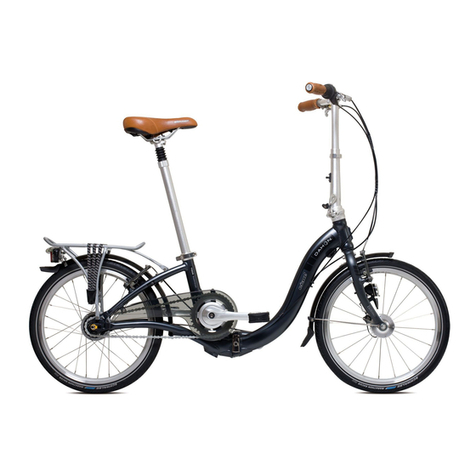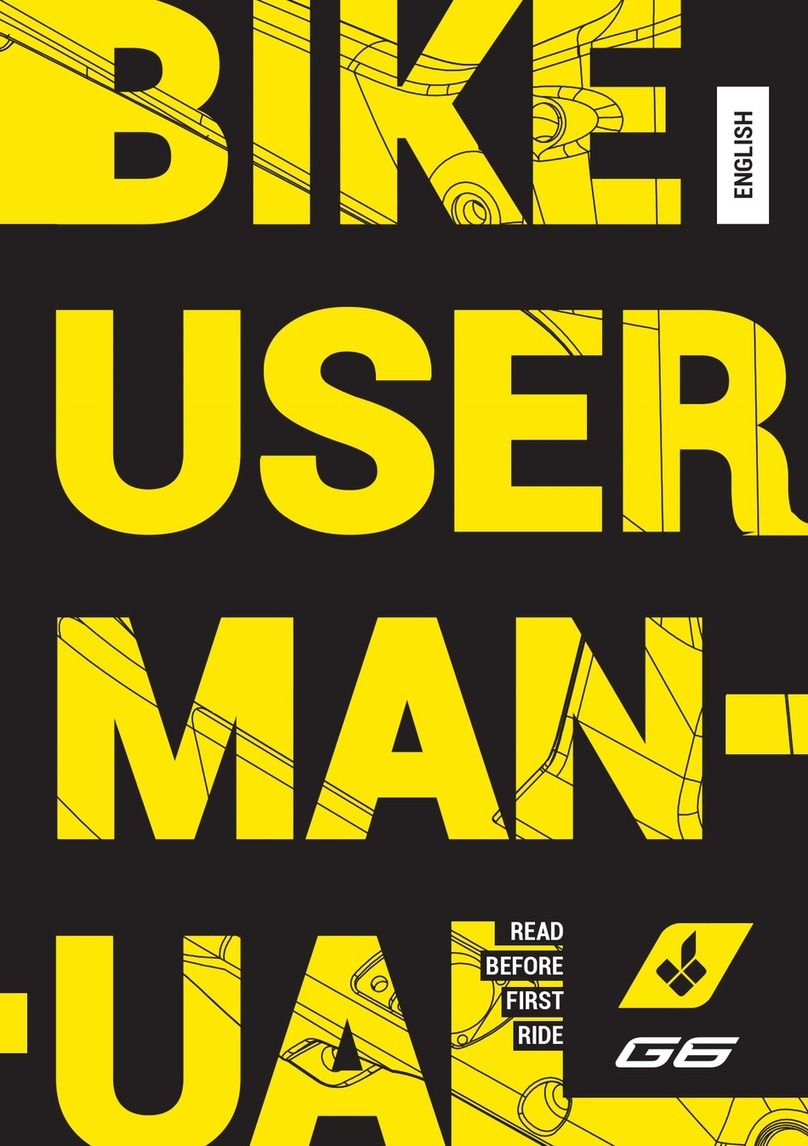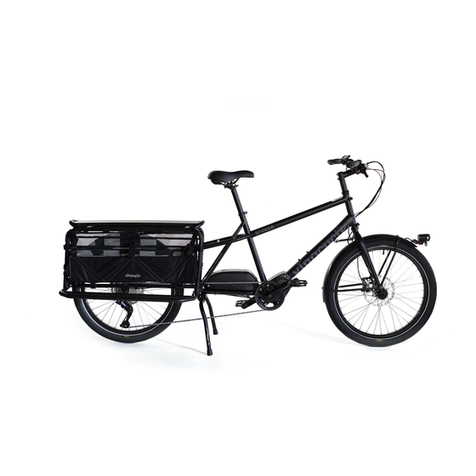
1 2
This manual is intended to assist Cervélo retailers in setting up and customizing the PX-Series bicycle.This manual is not
intended for consumer use, and requires the use of the specied tools to ensure proper assembly. This manual also references
proprietary parts available only to retailers through direct ordering from Cervélo.
Failure to use the specied parts and to follow the supplied assembly instructions may result in a loss of control while riding and
serious injury. This manual is an overview of the steps required to assemble this bicycle and to make any desired modications
as set forth in this manual. This manual assumes that the retailer has the minimum required background and skill level required
of all professional bicycle mechanics. See https://www.probma.org/
Important Information .................. 1
List of Tools & Supplies. . . . . . . . . . . . . . . . . 2
PX-Series Parts List................... 3
Small Parts ....................... 4
Frame & Fork Preparation. . . . . . . . . . . . . . . . . 5
Fork Installation .................... 7
Brake Housing Routing .................. 9
Electric Wire Routing ..................11
Mechanical Cable Routing. . . . . . . . . . . . . . . . . 12
Riser Post Cutting Instructions .............13
Riser Post Pad Mount Installation ............14
Extension Assembly. . . . . . . . . . . . . . . . . . . . 15
Extension Angle Adjustment................16
Arm Cup & Pad Installation................17
Arm Cup Positions ....................18
Split Basebar Wiring...................19
Split Basebar Installation................20
One-Piece Basebar Wiring. . . . . . . . . . . . . . . . . 21
One-Piece Basebar Installation..............22
Riser Post Wiring ....................23
Riser Post Assembly Installation.............24
Extension & Basebar - Di2 Wire Routing .........25
Extension & Basebar - eTap Wire Routing .........26
Extension & Basebar - Mechanical Cable Routing .....27
Stem Cover Installation . . . . . . . . . . . . . . . . . 28
Di2 Battery Installation. . . . . . . . . . . . . . . . . 30
Electric Wire Installation................31
Mechanical Cable Installation ..............32
SmartPak Installation ..................33
StealthBox Installation .................34
SpeedCase Installation. . . . . . . . . . . . . . . . . . 35
Seatpost Assembly . . . . . . . . . . . . . . . . . . . . 36
Seatpost Cutting Instructions ..............37
Tire Clearance. . . . . . . . . . . . . . . . . . . . . . 38
Aero Thru-Axle Installation ...............39
CER-PX-V2 - 2020-01-31
TABLE OF CONTENTS
IMPORTANT INFORMATION
LIST OF TOOLS & SUPPLIES
NOTE: This manual was developed to
compliment the Cervélo General User
Manual, and is intended as a supplement
to the assembly and installation
instructions supplied by the component
manufacturers (provided with this
bicycle). If you are a Cervélo PX-Series
consumer/purchaser reading this manual
we suggest that before attempting to
undertake any of the procedures in this
manual that you consult your authorized
Cervélo retailer, or visit us at
www.cervelo.com/support.
NOTE: All non-proprietary components are
available from your local distributor.
This manual outlines a number of procedures for
making optional adjustments to the PX-Series
bicycles.The following tools and parts listed are
required for these adjustments. Cervélo strongly
recommends that all assembly and adjustment
procedures be performed by an authorized
Cervélo retailer.
Tools
Bicycle workstand (types which
secure bike by the seatpost, or
pro-type stand with fork mount)
Torque wrench(es) with 2.5Nm to
15Nm range and adaptors:
Allen (Hex) head inserts:
2mm, 2.5mm, 3mm, 4mm, 5mm,
6mm, 8mm, 10mm
Open ended wrenches:
7mm, 8mm, 10mm, 17mm
Cable cutters
Pliers
Phillips-head screwdriver
Slot-head screwdriver
Tools
Pedal wrench
Brake rotor lockring tools
Hydraulic bleed kit
Isopropyl alcohol
Di2 wire tool – Shimano
Good quality bicycle grease &
carbon assembly compound
Saw cutting guide (Park Tool SG-7.2
or equivalent)
Hacksaw (with carbon specic
blade)


